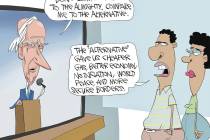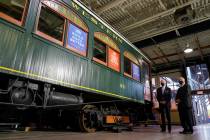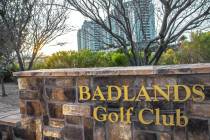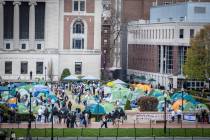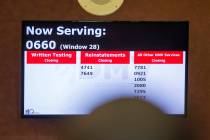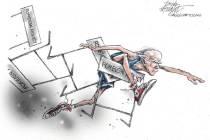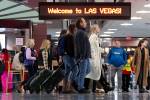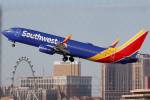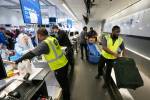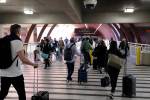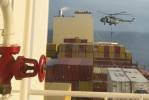The battle that changed everything
When war is thrust upon us -- as it was on Dec. 7, 1941, and again on Sept. 11, 2001 -- we ask our young men to put their lives on the line. Then the college debate squad in charge at the White House proceeds to spend more time worrying about how to avoid civilian casualties (actually proposing to award medals, now, to soldiers who manage to avoid hurting anyone) -- than they do mobilizing to grind our brutal assailants into the dust of history.
As our leaders suck their thumbs and decline to commit "too much force" because the polls might turn against them, one can't help but wonder if America has anyone left in long pants still willing to take over. (A few years back, it was Mr. Aspin refusing to send tanks to back up the Rangers in Mogadishu, today it's an Afghan "war" with a pre-designated surrender date.)
In such moments, it bears remembering that within living memory, a desperate nation entrusted to untested Rear Adms. Jack Fletcher and Ray Spruance three of its four remaining front-line aircraft carriers (the Saratoga arriving two days late) in a desperate gamble to turn the tide of Japanese conquest at a little mid-ocean sandspit called Midway Island.
On June 4, 1942 -- 68 years ago -- a few dozen lonely fliers aboard the USS Enterprise, Yorktown and Hornet were America's last line of defense. A more timid commander might have hoarded those minimal forces until the war factories, just churning into high gear, could supply him with some reserves.
Not Chester Nimitz. He had had enough. He sent Spruance and Fletcher to Midway -- the workers still aboard the Yorktown, trying to patch up the damage she'd sustained in the Coral Sea just a month before. The Japanese hoped to lure the last remnants of the American fleet out of Pearl Harbor to defend Midway. But the American code-breakers intercepted their plans, and Spruance and Fletcher were in position early enough to ambush the ambushers. If only, by some miracle, the green American pilots could get their bulky planes through the vaunted air defenses of the four front-line carriers of Vice Admiral Chuichi Nagumo's First Air Wing.
At 4:30 in the morning of June 4, 240 miles northwest of Midway, Nagumo's four carriers began launching more than 100 planes to attack the U.S. base there. But just as Nagumo was re-arming his planes for a second strike at Midway, a tardy Japanese scout plane reported the startling presence of an American carrier only 215 miles away. Changing his plans on the fly, Nagumo ordered the planes on his carriers' decks rearmed with torpedoes to attack what he now correctly saw as the primary threat, the "lone" offensive American warship.
Spruance launched first. Struggling fully loaded into the air between 7 and 9 a.m., three squadrons of torpedo bombers and five squadrons of dive bombers, plus a pitiful few F-4 fighter escorts, vectored toward the Japanese fleet's last known position. But these slapped-together forces were badly coordinated.
At 9:15 a.m., the first U.S. carrier planes sighted their targets and began their attacks. Fifteen TBD-1 Devastators of Lt. Cmdr. John C. Waldron's Torpedo Squadron Eight from the Hornet dove without hesitation into combat against the more maneuverable Zeroes of the Japanese combat air screen.
They were all shot down.
They scored not a single hit.
One man, Ensign George Gay, bailed out and survived, acquiring history's greatest (if not necessarily most comfortable) box seat as he watched the rest of the battle from sea level, bobbing in his life vest.
The Enterprise's Torpedo Squadron Six, led by Lt. Cmdr. Eugene E. Lindsey, bored in next. Lindsey's squadron scored no hits, while losing all but five of its 14 TBDs.
Lt. Cmdr. Lance E. Massey's Torpedo Squadron Three from the USS Yorktown was next. Two planes survived. No hits.
It was a disaster. Would you have kept on? Dozens of precious, brave, American planes and air crews lost -- nearly the last of their kind between Tokyo and San Francisco -- and nothing accomplished.
Unless you count one thing, so seemingly insignificant. Through their dogged, relentless, suicidal attacks, the slow and outdated Yankee torpedo planes had pulled down the Japanese air cover to sea level, where the covering Zero fighters now skipped off at wave top height, chasing the last, escaping American stragglers. That and the fact that the desperate maneuvering of the Japanese carriers had slowed the rearming and refueling of their planes on deck, so the fuel hoses and piles of bombs and torpedoes still being off-loaded and on-loaded were piled everywhere.
If only the Americans had just a few more planes in reserve, somewhere up in those clouds. Just a few.
Nagumo knew that was impossible, of course. His scouts had spotted just the one enemy carrier. The Americans couldn't possibly have sent every attack carrier they had left on the face of the Earth to this one featureless spot in the middle of the God-forsaken Pacific Ocean. America was a nation of soft-headed cowards. Who there would authorize such a gamble?
Led by Lt. Cmdr. Clarence W. McClusky, the Enterprise's luckless Bombing Squadron Six and Scouting Squadron Six had missed the Japanese carriers entirely, steering too far south. They did finally spot the little Japanese destroyer Arashi, speeding north with a bone in her teeth. But she wasn't much of a target, and McClusky's planes were nearing the point of fuel depletion, which would require them to turn back. McClusky could have turned for home.
Instead, on a hunch, he decided to take a bearing from the course of the fast-moving destroyer, turning north to see where she was headed in such a rush. The Arashi, speeding north to rejoin her fleet after depth-charging the USS Nautilus, led him directly to four Japanese aircraft carriers, their decks littered with bombs, torpedoes and fuel -- and no air cover in sight.
At the same moment, Lt. Cmdr. Maxwell F. Leslie arrived from the east, with Bombing Squadron Three from the carrier the Japanese believed was sunk at the Coral Sea: the USS Yorktown.
And so at about 10:25, with the Japanese fighter cover still down at wave top height chasing off the last American torpedo planes, "blessed with an extremely lucky degree of coordination" (in the gentle words of official U.S. naval historians) McClusky and Leslie "commenced one of history's most dramatically decisive attacks."
It took five minutes. By 10:30 a.m., the battle -- and the eventual course of the naval war in the Pacific -- was decided. The carriers Soryu, Kaga and Akagi erupted in flames and perished. Of the once proud Japanese First Air Wing, only the carrier Hiryu remained.
A flight of Yorktown SBDs found her at 5 p.m. And then there were none.
A stunned Adm. Isoroku Yamamoto called off the invasion of Midway the next day.
June 4, 1942. Lt. Cmdr. John C. Waldron. Lt. Cmdr. Eugene E. Lindsey. Lt. Cmdr. Lance E. Massey. Lt. Cmdr. Clarence W. McClusky. Lt. Cmdr. Maxwell F. Leslie.
Will we live to see their like again?
I think so.
Vin Suprynowicz is assistant editorial page editor of the Review-Journal, and the author of "Send in the Waco Killers" and the novel "The Black Arrow." See www.vinsuprynowicz.com/.








